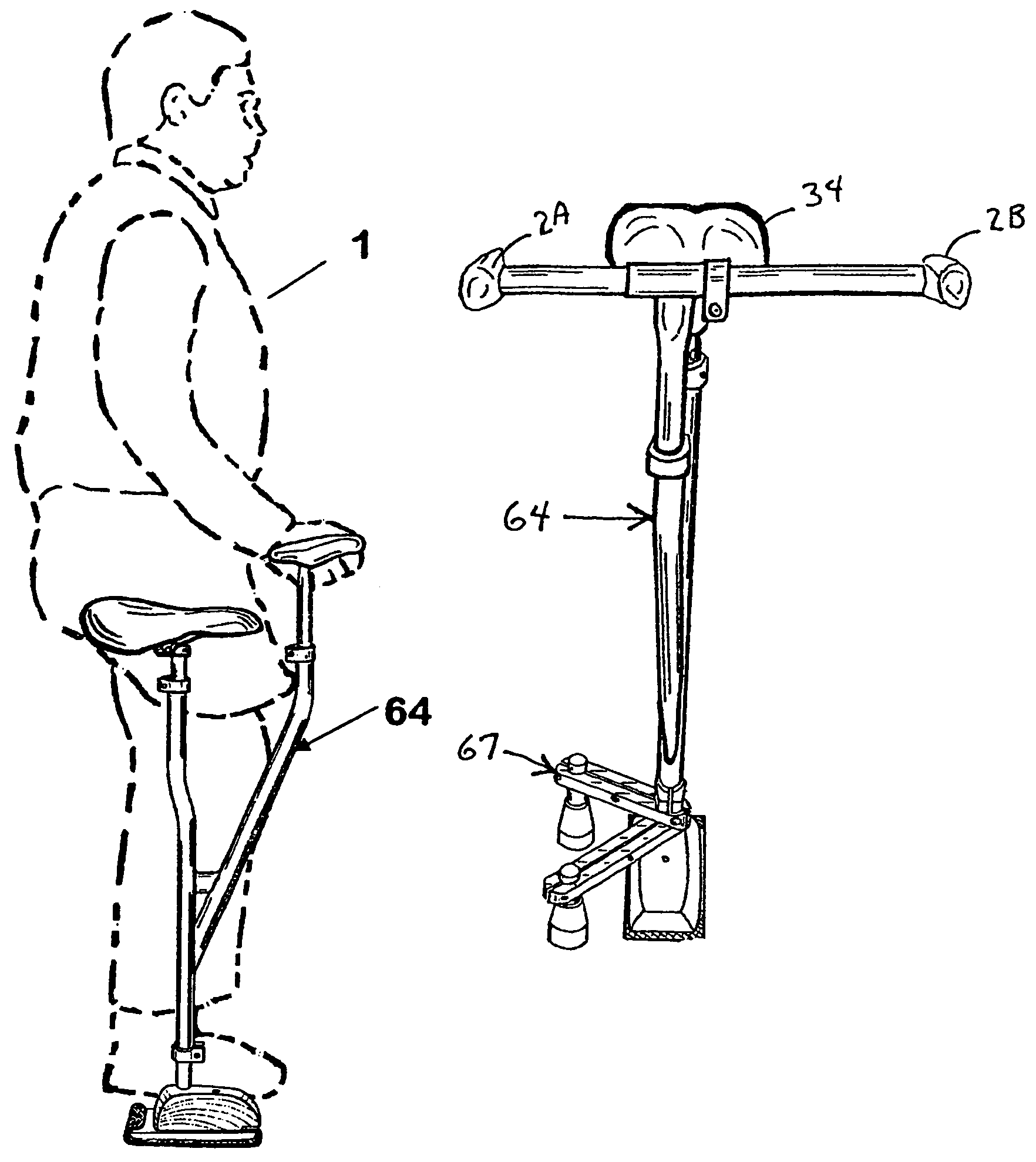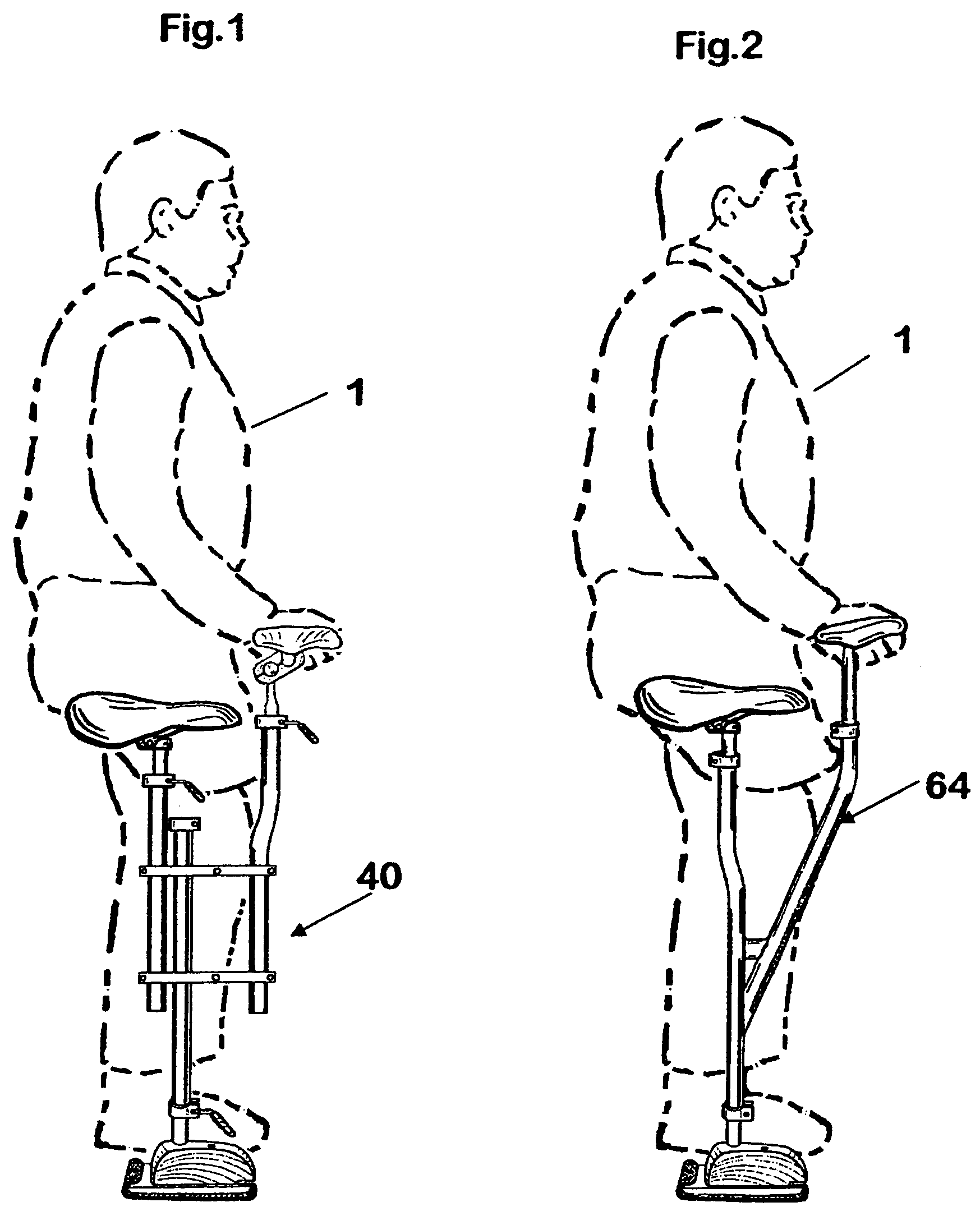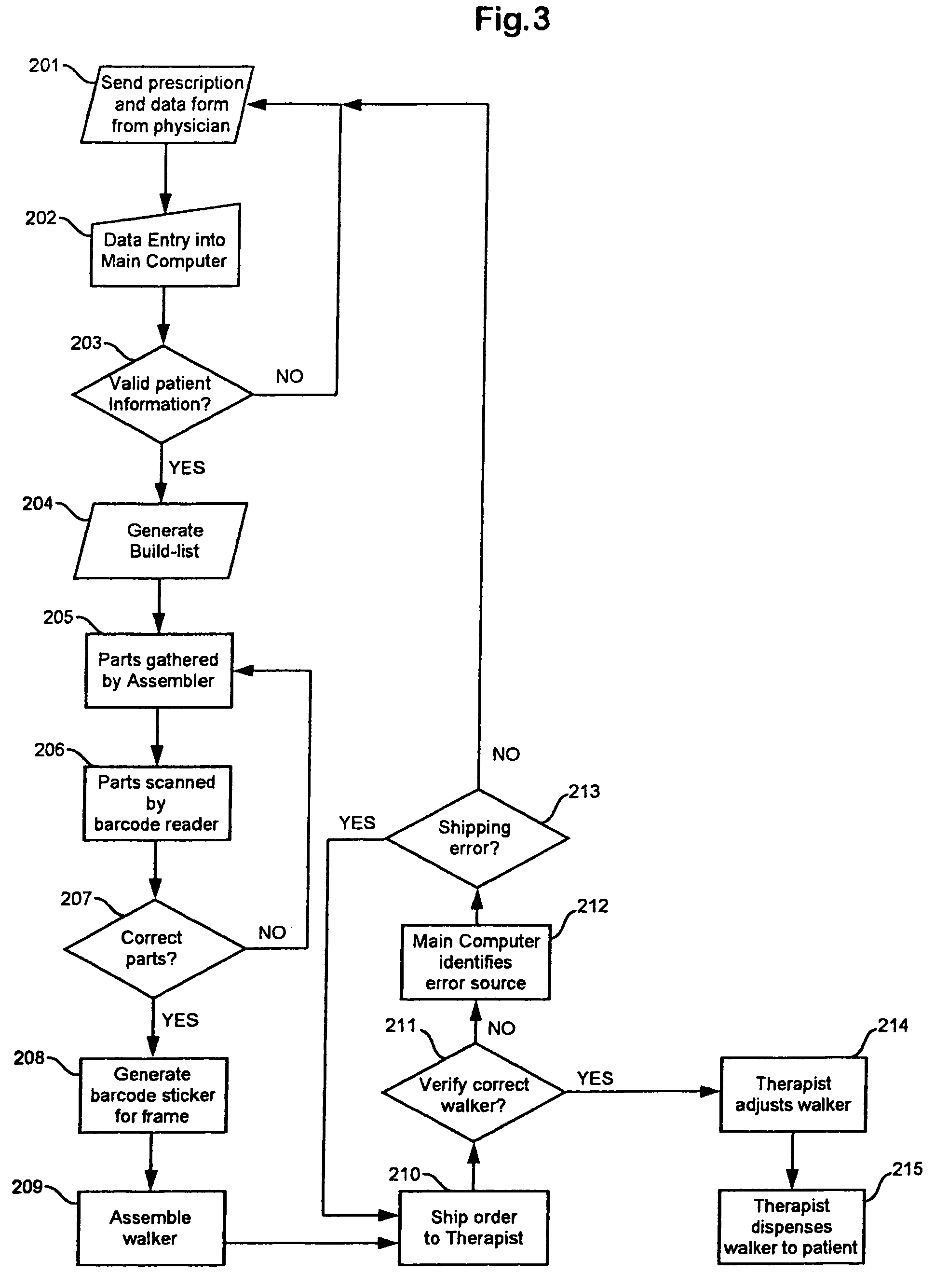Ambulatory walker
a technology of ambulatory walker and walker body, which is applied in the direction of wheelchairs, cycle equipment, transportation and packaging, etc., can solve the problems of inability to ambulate, device simplification is not easy enough, and the individual's hand movement is limited, so as to improve the ordering and distribution of properly sized components, the effect of improving balance and simplifying manufacturing design
- Summary
- Abstract
- Description
- Claims
- Application Information
AI Technical Summary
Benefits of technology
Problems solved by technology
Method used
Image
Examples
Embodiment Construction
[0023]Referring to the drawings in detail, FIG. 1 shows a phantom amputee sitting on one embodiment of the inventive walker 40 designed for a right leg amputee, with the device being properly adjusted for height of the seat, height of the hands and the distance of the hands from the pelvis to achieve proper balance and posture.
[0024]FIG. 2 shows, the same phantom amputee as sitting on a right injured limb offset frame assembly 64 in accordance with another embodiment of the invention. The user is in a natural comfortable stance with little curvature of the spine.
[0025]FIG. 3 is a flow chart showing a method for dispensing the walker 64 by verifying the correct walker for the injury. It is a check and balance system for the physician, therapist and the dispensing facility.
[0026]In block 201, a patient is evaluated by a physician as a suitable candidate for the device. The physician writes a prescription to that effect and fills out sections of a template form provided by the supplier...
PUM
 Login to View More
Login to View More Abstract
Description
Claims
Application Information
 Login to View More
Login to View More - R&D
- Intellectual Property
- Life Sciences
- Materials
- Tech Scout
- Unparalleled Data Quality
- Higher Quality Content
- 60% Fewer Hallucinations
Browse by: Latest US Patents, China's latest patents, Technical Efficacy Thesaurus, Application Domain, Technology Topic, Popular Technical Reports.
© 2025 PatSnap. All rights reserved.Legal|Privacy policy|Modern Slavery Act Transparency Statement|Sitemap|About US| Contact US: help@patsnap.com



